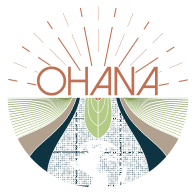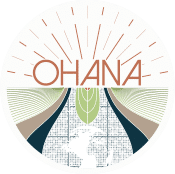
EU Chemical Law Explained: A Comprehensive Glossary to Demystify the EU’s Chemical Jargon
Along with the EU’s growing efforts towards its green transition, comes an increased focus on developing legislation to limit the impact of hazardous chemicals on human health and the environment.
This urgent and complex subject reinforces the need for a wider range of stakeholders to contribute to the legislative process if we are to create both timely and effective changes. However, a significant barrier for individuals and institutions looking to engage in these discussions is the complex terminology used in this space.
To help remove that obstacle, Ohana’s experts have developed a unique glossary, which we are excited to share with you in this article. Designed to demystify the most common terms used in EU chemicals law, this article will equip you with the essential knowledge to join the most key conversations around the Union’s sustainability plans.
Want someone with deep experience and connections in the EU to help guide your sustainability strategy? Get in touch!
What’s Behind the Complexity of EU Chemical Law?
EU chemicals legislation stands as one of the most technical and complex chemical legislations in the world. This complexity comes from the need for EU institutions to balance two critical aspects: assessing the toxicology of various chemical substances and evaluating their specific applications across diverse use cases, such as in automobiles, textiles, cosmetics, and more. Additionally, the regulatory process for chemicals in the EU is distinct from other policy areas, employing a so-called ‘implementing act procedure’ rather than the standard legislative procedure. This intricate framework demands intense scrutiny from numerous technical bodies, EU Member State chemical authorities, and stakeholder groups, each with a specific focus on this area of legislation.
These particularities make the EU chemicals law a challenging domain, even for those directly involved in EU policy-making, and a significant hindrance for organisations aiming to advocate on the subject and participate in the legislative arena.
Understanding the Most Key Concepts Within EU Chemicals Law
After understanding a bit more about what makes EU chemicals legislation so complex, let’s try to simplify it by looking at what the most commonly used terms within those policies mean.
Note that the terms in this glossary appear in alphabetical order, so if a definition includes an acronym you do not recognise, it will be explained further down the list.
Authorisation: Under REACH (Registration, Evaluation, Authorisation, and Restriction of Chemicals), certain chemical substances of very high concern may be subject to an authorisation process, where their use is permitted only if explicitly authorised. This is typical for substances for which we have not yet found any suitable alternatives.
BPR (Biocidal Products Regulation): BPR is a regulation that addresses the use and the placing on the market of biocidal products within the EU, and which aims to ensure a high level of protection for humans and the environment. The BPR categorises biocidal products into twenty-two product types, grouped into four main areas: Disinfectants and General Biocidal Products, Preservatives, Pest Control and Other Biocidal Products. Biocidal products go from disinfectants for hands and skin, to metalworking fluids and insecticides.
CARACAL (Competent Authorities for REACH and CLP): CARACAL is an official forum where ECHA, EU Member State Competent Authorities, and stakeholder groups, such as NGOs and industry associations, discuss the practical implementation of REACH and CLP (Classification, Labelling, and Packaging) regulations.
CLP (Classification, Labelling, and Packaging of Chemical Products Regulation): CLP is an EU regulation that aligns the classification and labelling of chemicals with the GHS (Globally Harmonized System of Classification and Labelling of Chemicals). In simple terms, the CLP assigns different hazard classifications (e.g. carcinogenic, mutagenic, reprotoxic, endocrine disrupting, persistent and bioaccumulative) to specific chemical substances based on the current body of scientific research. It also regulates how chemical products should be labelled in order to communicate their respective hazards.
CSR (Chemical Safety Report): CSR is a document required under REACH for substances manufactured or imported in quantities larger than 10 tonnes per year. It includes information about the properties as well as the safe use of the substance.
CSS (Chemical Strategy for Sustainability): Published in 2020 by the European Commission, the EU Chemical Strategy for Sustainability is part of the EU’s zero pollution vision, which is a key commitment of the European Green Deal. The strategy identifies legislative and non-legislative changes needed to reduce the exposure of the EU population to hazardous chemicals and foster innovation around safe and sustainable chemicals.
Downstream User: A company or individual who uses chemicals in the course of their industrial or professional activities, but does not manufacture or import them. An example could be a textile brand that buys chemical products from chemical suppliers to use them for the textile production.
ECHA (European Chemicals Agency): ECHA is the agency responsible for the implementation of the REACH and CLP regulations in the European Union. ECHA’s Committees, RAC and SEAC, are two important scientific bodies advising on the conditions of proposed REACH restrictions and authorisations.
EUC (Essential Use Concept): EUC is a concept proposed under the revision of the REACH Regulation. The concept consists of a set of criteria allowing one to assess if the use of a given chemical substance is necessary for the functioning of society, and for which no alternatives are available. The idea would be to integrate the concept into the restriction and authorisation procedures under the REACH Regulation. In this way, hazardous substances could be exempted from restrictions based on the essentiality criteria, rather than predominantly based on the availability of alternatives, as has been the case so far.
EDs (Substances with Endocrine Disrupting Properties): EDs are chemicals that may interfere with the hormonal system, thereby producing harmful effects in both humans and wildlife. Scientific consensus has been reached about the serious deleterious health effects of EDs on human populations, which include infertility, lower IQ, and many other issues. Such substances are currently present in small concentrations in many consumer products and the EU is only now starting a regulatory movement to reduce human and environmental exposure to them. The first regulatory step was to add the ED hazard class to the CLP classification and, in the near future, the EU Commission should start working on restricting chemicals with ED properties under the REACH Regulation.
GHS (Globally Harmonized System of Classification and Labelling of Chemicals): The GHS is an international system for the classification and labelling of chemicals, to ensure a consistent worldwide approach. At the EU level, the GHS classification is reflected in the CLP Regulation.
GRA (Generic Approach to Risk Assessment): Also known as a hazard-based approach, the GRA has been proposed as part of the CSS and REACH revision, and is considered a precautionary approach to restricting chemicals. Instead of restricting individual chemical substances based on their toxicity and exposure factors, which is very time-consuming and slows down restriction processes, the GRA’s blanket approach would allow the banning of groups of hazardous chemicals based on their intrinsic hazard properties (CLP classification).
RAC (Risk Assessment Committee): The RAC is a committee within the European Chemicals Agency (ECHA) responsible for evaluating the risks of substances to human health and the environment. Along with the opinions of the SEAC, the views of the RAC feed into the REACH restriction and authorisation processes.
REACH Committee: The REACH Committee is composed of a chemical competent authority from each EU Member State and chaired by representatives from the European Commission. It is the decision body within the Commission in adapting and updating the REACH Regulation. During regular REACH Committee meetings, its members discuss the shape and specific ongoing REACH restriction and authorisation files.
REACH Regulation (Registration, Evaluation, Authorization, and Restriction of Chemicals): REACH is a comprehensive framework designed to ensure the safe use of chemicals within the EU and protect humans and the environment from potential chemical hazards. As part of the EU Chemicals Framework, this regulation not only promotes the understanding and management of chemical risks but also encourages the development of safer alternatives. Notably, REACH is the most relevant for consumer goods manufacturing companies, since restrictions ban the use of certain chemical substances in products.
REACH Revision: The REACH revision is an ongoing legislative process to update the REACH Regulation and its processes, with the goal of making it more agile and better suited for protecting the EU population from hazardous chemicals. Officially initiated in 2020, it has since faced strong resistance from various chemical industry groups. As a result, the revision proposal has been postponed, and is yet to be published by the European Commission, which is now expected to happen after the 2024 EU elections.
Restriction: Under REACH Regulation, restriction is a procedure by which a specific substance (or substance group) can be limited or banned from being placed in the EU market and used in consumer articles. A notable example of a REACH restriction is the ongoing restriction proposal on PFAS.
SEAC (Socio-Economic Analysis Committee): The SEAC is another committee within ECHA that assesses the socio-economic impacts of substances, considering the costs and benefits of regulatory actions, such as chemical restrictions, for example.
SVHC (Substance of Very High Concern): SVHCs are substances that may have serious and often irreversible negative effects on human health and the environment. They are identified based on criteria such as being carcinogenic, mutagenic, toxic for reproduction, persistent, bioaccumulative and toxic (PBT), very persistent and very bioaccumulative (vPvB), or posing equivalent levels of concern. Identifying and regulating SVHCs is a key aspect of REACH, which demands products with a concentration above 0.1% (weight by weight) of such substances to be reported to ECHA.
PFAS (Per- and Polyfluorinated Substances): PFAS are a group of chemicals used to make fluoropolymer coatings and products that resist heat, oil, stains, grease, and water. Also known as “Forever Chemicals” due to their resistance to degradation, these high-toxicity substances can accumulate both in the environment and in human bodies, leading to serious conditions such as infertility and cancer. As previously mentioned, the EU is in the process of banning most PFAS uses under a universal PFAS restriction within the REACH Regulation.
PBT (Persistent, Bioaccumulative, and Toxic): PBT is a classification for substances that are persistent in the environment, bioaccumulate in organisms, and exhibit toxicity.
Now that you are more familiarised with the fundamental concepts of EU chemicals legislation, we encourage you to bookmark this page for future reference and share it with others who might find it relevant. By breaking down the barriers of technical jargon, we can foster a more inclusive and informed dialogue, crucial for advancing the EU’s green transition and protecting both human health and the environment.
This glossary is part of Ohana’s unique approach to public affairs, which involves not only supporting our clients in developing high-quality sustainability strategies, but also empowering these organisations to engage more effectively in the discussions that will shape their future. The services we offer also go far beyond our expertise in EU chemicals law, and the Ohana team will successfully guide you on your sustainability journey no matter the industry you are in.
Want someone with deep experience and connections in the EU to help guide your sustainability strategy? Get in touch!
Join our newsletter to keep up to date with the latest news and information coming out of the EU.




